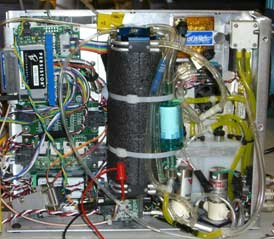
In 2009, the ARM Aerial Vehicles Program (AVP) will support the Routine AVP Clouds with Low Optical Water Depths (CLOWD) Optical Radiative Observations (RACORO) field campaign, led by principal investigator Andrew Vogelmann. During this long-term campaign, the AVP will conduct routine flights at the ARM Southern Great Plains (SGP) site to sample low-altitude liquid-water clouds in the boundary layer. The purpose is to obtain representative statistics of cloud microphysical properties needed to validate retrieval algorithms and support process studies and model simulations of boundary layer clouds and, in particular, CLOWD-type clouds. The results will include extensive statistics on these clouds, given their high frequency of occurrence in mid-latitudes.
The objectives of the campaign are to:
- Obtain representative statistics of cloud optical and microphysical properties, and cloud radiative fluxes for cloud retrieval validations.
- Observe aerosol properties—such as aerosol amount, aerosol size distribution, and the number of cloud condensation nuclei—associated with cloud variability.
- Facilitate understanding of how meteorological factors influence cloud dynamics, microphysical properties, and aerosol-cloud interactions.
The knowledge gained through this effort will be used to evaluate and improve global climate models. Potential model improvements include the parameterization of continental boundary layer clouds, the representation of broken cloudiness in 3D radiative transfer, and inclusion of unresolved sub-grid dynamical processes, and aerosol-cloud interactions.

